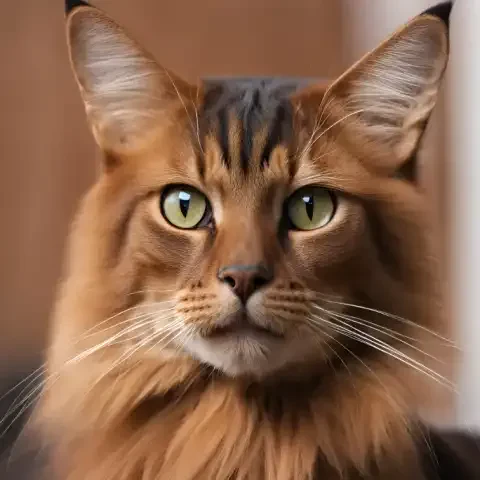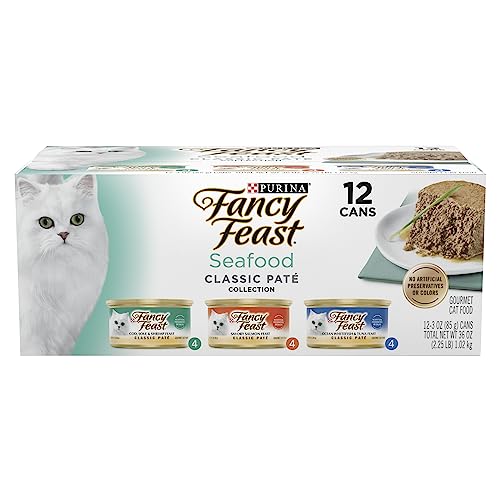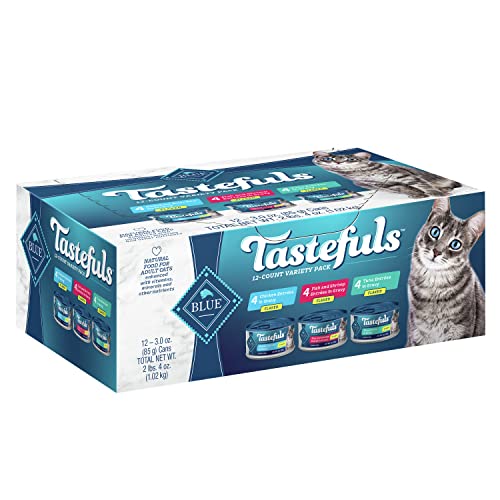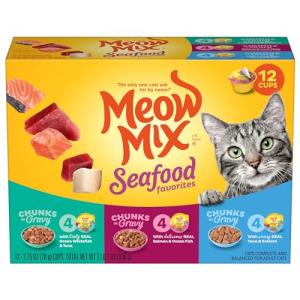From the mischievous grins of early cartoon characters to the ubiquitous presence of feline memes flooding our social media feeds, cats have undeniably clawed their way to a unique and captivating position in our collective imagination. For nearly a century, and arguably even longer if we consider folklore and mythology, felines have stalked across the landscapes of popular culture, leaving indelible paw prints on animation, comics, literature, film, and now, the internet. Their enduring appeal transcends generations and media formats, proving that something about the enigmatic nature of cats deeply resonates with the human psyche.
This article embarks on a whimsical yet insightful journey through the pantheon of famous felines. We will explore a diverse range of iconic cats, spanning different eras and mediums, from the golden age of cartoon animation to the viral vortex of internet stardom. We will examine beloved cartoon classics, meme-worthy internet sensations, and even real-life feline celebrities whose heartwarming stories have captured hearts worldwide. Through this exploration, we aim to unravel the enduring phenomenon of famous felines, delving into the reasons why certain cats achieve such iconic status and what their continued popularity reveals about our complex and ever-evolving relationship with cats, and with popular culture itself. Prepare to be enchanted by the fascinating world of famous felines, from the tip of their twitching whiskers to the end of their gracefully swishing tails.
The dawn of the 20th century witnessed not only groundbreaking advancements in technology but also the nascent stages of animation as a powerful storytelling medium. And amidst this exciting new frontier emerged one of the earliest and most enduring cartoon superstars: Felix the Cat. With his distinctive black and white design, mischievous grin, and perpetually inquisitive nature, Felix wasn't just a cartoon character; he was a cultural icon, a symbol of the roaring twenties and the boundless possibilities of animation. Felix’s key characteristics, his cleverness and resourcefulness in navigating often chaotic situations, combined with his iconic “magic bag of tricks” that could morph into any tool or object he needed, solidified his place in animation history. His silent film era antics, devoid of dialogue yet brimming with expressive physicality and visual gags, transcended language barriers and charmed audiences worldwide. Felix wasn't just entertaining; he was innovative, pushing the boundaries of early animation and paving the way for generations of cartoon characters to follow. While perhaps less immediately recognizable to modern audiences than some of his successors, Felix the Cat's historical significance cannot be overstated. He laid the foundation for the cartoon cat archetype, a clever, adaptable, and slightly mischievous figure that would continue to evolve and captivate audiences for decades to come. His lasting cultural impact is evident in numerous subsequent iterations and homages, ensuring that Felix remains a vital, if often underappreciated, figure in the history of famous felines.
Fast forward several decades, and the cartoon cat archetype reached a new zenith of popularity with the arrival of Garfield. Created by Jim Davis in 1978, Garfield was not just another cartoon cat; he was, and remains, the quintessential modern cartoon feline. Garfield's defining traits – his unapologetic laziness, his insatiable love of lasagna, his cynical wit, and his remarkably relatable human-like flaws – struck a chord with audiences worldwide. Unlike the purely mischievous or heroic cartoon cats that preceded him, Garfield was, in many ways, an anti-hero, a creature of comfort and self-indulgence, yet utterly endearing in his flawed humanity (or, rather, felinity). The Garfield comic strip quickly exploded in popularity, becoming a global phenomenon translated into countless languages and spawning a vast empire of television shows, movies, merchandise, and more. Garfield’s genius lies in his relatability. He embodies the everyday struggles and small joys of modern life – the Monday blues, the craving for comfort food, the desire for naps over exercise, all filtered through the lens of a distinctly feline perspective. His humor is observational, often sarcastic, and deeply rooted in the mundane realities of domestic life, making him instantly recognizable and hilariously appealing to readers of all ages. Garfield resonated so deeply because he held up a comedic mirror to our own lives, reminding us to laugh at our imperfections and embrace the simple pleasures, like a perfectly cheesy slice of lasagna, even amidst the chaos of modern existence.
In stark contrast to Garfield's sedentary charm, Tom, of Tom and Jerry fame, embodies a different facet of the famous feline archetype: the perpetually determined, yet perpetually outsmarted, pursuer. As one half of the iconic slapstick duo, Tom's role is that of the determined feline antagonist, forever engaged in a chaotic, often destructive, yet always entertaining rivalry with the resourceful mouse, Jerry. Tom’s key characteristics are his unwavering determination in his pursuit of Jerry, his hilariously expressive reactions to Jerry's constant victories, and his almost superhuman resilience in the face of cartoon violence. Despite his repeated failures and often elaborate schemes gone awry, Tom never gives up, embodying a persistent, if somewhat misguided, feline determination. The enduring appeal of Tom and Jerry’s dynamic lies in their timeless slapstick humor, their brilliantly animated visual gags, and the endlessly engaging chase dynamic between cat and mouse. Tom’s specific feline portrayal, despite being anthropomorphic, retains core feline traits like agility, cunning (however often flawed), and a primal hunting instinct, albeit comically exaggerated. The longevity of the Tom and Jerry franchise, spanning decades and numerous iterations, is a testament to its enduring appeal, and Tom remains an instantly recognizable and iconic figure in the history of animation, a testament to the comedic potential of the eternally frustrated cartoon cat.
As the internet age dawned, the landscape of fame irrevocably shifted, and with it, the nature of famous felines. No longer confined to the realm of traditional media, cats found a new platform to achieve global stardom: the internet. And leading this digital feline revolution was Grumpy Cat, or rather, Tardar Sauce, the real cat behind the meme. Grumpy Cat's rise to internet fame was a phenomenon entirely of its time. Her naturally “grumpy” facial expression, a result of feline dwarfism, perfectly coincided with the burgeoning meme culture of the early 2010s, a cultural landscape ripe for relatable expressions of everyday moods and sentiments, often tinged with irony and self-deprecation. The Grumpy Cat meme format, typically featuring a photo of Tardar Sauce’s perpetually downturned mouth and furrowed brow paired with captions expressing cynical or negative sentiments, became instantly viral. It resonated deeply with internet users who found humor and validation in Grumpy Cat’s perpetually unimpressed demeanor. Grumpy Cat's unexpected fame quickly transcended meme status, transforming into a full-fledged internet phenomenon, complete with merchandise deals, public appearances, and even movie cameos. Grumpy Cat became such a viral sensation due to a perfect storm of factors: her undeniably unique and visually striking appearance, the inherent relatability of her “grumpy” persona in an increasingly digital and often overwhelming age, and the power of meme culture to rapidly disseminate and amplify online content. Behind the meme, however, was a real cat, Tardar Sauce, whose gentle temperament and unexpected fame brought joy to millions and inadvertently launched a new era of internet feline celebrity.
In stark contrast to Grumpy Cat's cynical charm, Lil Bub, another internet feline icon, captivated audiences with her unique “perma-kitten” appearance, a result of several genetic mutations. Lil Bub's large, perpetually wide eyes, her perpetually extended tongue, and her small size contributed to an undeniably endearing and vulnerable aesthetic. Her unusual appearance, coupled with her heartwarming backstory as a rescue cat with special needs, propelled her to internet stardom. Lil Bub’s fame, however, extended far beyond mere internet clicks and memes. She became a powerful force for good, using her platform to advocate for animal welfare, particularly for special needs animals, and raising significant funds for animal charities. Lil Bub’s appeal lay in her vulnerability, her undeniable cuteness, and her inspiring story of resilience and positivity in the face of physical challenges. She embodied a different facet of internet feline fame, one rooted in compassion, empathy, and the celebration of unique beauty, even in the face of imperfection. The contrast between Grumpy Cat's “grumpy” appeal and Lil Bub's “cute and vulnerable” appeal highlights the diverse range of feline personas that can resonate within the internet sphere, each tapping into different aspects of human emotion and online culture.
Another unexpectedly viral feline sensation of the internet age is Keyboard Cat, or rather, the original Keyboard Cat video featuring Fatso (later revived with Bento). Keyboard Cat's fame was a testament to the often-random and unpredictable nature of internet virality. The original video, filmed decades before it went viral, featured Fatso seemingly “playing” a keyboard with the help of his owner. It was the unexpected humor and sheer absurdity of a cat appearing to play musical instruments that launched Keyboard Cat into meme stardom. The Keyboard Cat meme format, often used to punctuate comedic video edits or signify a humorous “exit” from an online situation, became a ubiquitous element of internet culture. Keyboard Cat’s appeal lies in its absurdist humor, its unexpected and delightful surprise, and the sheer joy of witnessing a cat seemingly engage in a very human activity, albeit in a hilariously feline way. Keyboard Cat's unexpected internet fame serves as a reminder of the often-unpredictable nature of virality and the enduring power of humor, even in its most absurd and feline-centric forms.
While cartoon cats and internet memes dominate the landscape of famous felines, real-life felines have also occasionally clawed their way into the spotlight, capturing hearts through inspiring and heartwarming stories. Bob the Street Cat stands as a prime example of a real-life feline who achieved global fame through a truly extraordinary and touching narrative. Bob wasn't just a pet; he was a lifeline, a companion who played a pivotal role in the life transformation and recovery of his human, James Bowen, a recovering addict and busker in London. Bob's backstory, as a stray cat who chose James and effectively rescued him in return, became the basis for the bestselling book "A Street Cat Named Bob," which in turn spawned a successful movie franchise and catapulted both James and Bob to international fame. Bob’s story resonated so deeply with audiences worldwide because it tapped into universal themes of redemption, the transformative power of the human-animal bond, and the often-underestimated value of companionship, particularly for those struggling with isolation and adversity. “A Street Cat Named Bob” celebrated real-life feline companionship on a grand scale, showcasing the profound impact a cat can have on a human life, offering not just affection but also purpose, responsibility, and unconditional love. Bob’s fame transcended mere celebrity status; he became a symbol of hope, resilience, and the extraordinary power of the human-animal connection, forever changing perceptions of street cats and highlighting the importance of animal welfare and compassion.
The enduring appeal of famous felines, across cartoons, memes, and real-life stories, begs the question: why do cats, in particular, so consistently captivate us? What is it about these enigmatic creatures that translates so readily into popular culture fame?
Part of the answer lies in the inherent “cat mystique.” Cats, unlike their canine counterparts, are often perceived as more independent, more mysterious, and less overtly demonstrative in their affections. This perceived independence and enigmatic nature translates into intrigue and fascination in popular culture. Cats are seen as subtly complex creatures, their inner lives often inscrutable, lending themselves perfectly to character development and projection, whether in fiction or in online personas. Their inherent grace, their quiet observation, and their flashes of unpredictable behavior create a sense of mystery that humans find endlessly captivating. This “enigmatic” nature allows us to project our own interpretations and emotions onto them, making them versatile and compelling figures in storytelling and online expression.
Furthermore, famous felines often embody relatable human traits or archetypes, despite their feline form. Garfield’s laziness and love of comfort food resonate with the everyday struggles of modern life. Grumpy Cat’s cynicism and unimpressed demeanor perfectly capture the online zeitgeist of ironic detachment and relatable negativity. Tom’s unwavering perseverance, despite constant setbacks, embodies a universal theme of resilience and determination. Even Lil Bub’s vulnerability and Lil Bub's sweetness tap into our empathy and desire to protect the innocent and celebrate unique beauty. These relatable aspects, filtered through a feline lens, contribute significantly to their popularity and meme-ability, allowing us to see reflections of ourselves and our own experiences in these furry figures.
The visual appeal of cats is undeniable and cannot be overlooked. Their inherent grace, their sleek beauty, their wide range of expressive facial features and body language, and their photogenicity make them perfectly suited for visual media. From the expressive animation of Felix and Tom to the high-resolution close-ups of Grumpy Cat and Lil Bub, cats are inherently visually captivating creatures. Their physical characteristics and expressive faces lend themselves perfectly to meme creation and viral sharing. The internet, with its emphasis on visual content and rapid dissemination of images and videos, has amplified feline fame precisely because cats are so inherently visually appealing and “meme-able.” A single perfectly captured feline expression can launch a thousand memes, proving the enduring power of feline visual charisma in the digital age.
Ultimately, the enduring appeal of famous felines reflects our deep-seated human-animal bond. Whether fictional or real, these characters tap into our inherent desire for companionship, affection, and connection with animals. Their stories, both humorous and heartwarming, often celebrate the positive impact of cats on human lives, showcasing their capacity for love, loyalty, and unexpected heroism. Famous felines remind us of the joy, comfort, and unconditional love that animals, and cats in particular, can bring into our lives, solidifying their place not just as pets, but as cherished members of our families and our cultural landscape.
From the tip of their whiskers to the end of their tails, famous felines continue to purr their way into our hearts and our cultural landscape, proving that the magic and mystery of cats remains eternally captivating. From the early days of animation to the boundless expanse of the internet, cats have consistently found new avenues to charm, amuse, and inspire us. Their enduring presence in popular culture is a testament to their unique appeal, their inherent relatability, and the timeless bond between humans and these enigmatic, captivating creatures. As long as there are cats, and as long as there is popular culture, famous felines will undoubtedly continue to grace our screens, our pages, and our hearts, proving that the reign of the feline in the realm of fame is far from over.







